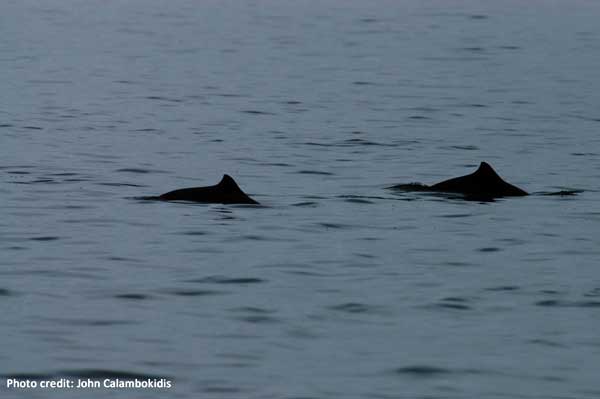The shy Harbor Porpoise is a marine mammal, the smallest and most widespread of the family called cetaceans (pronounced "sě-tā-shŭns"). It can be found along ocean shores throughout the Northern Hemisphere. Although Harbor Porpoises are common and travel close to land, they're difficult to observe for long. Sightings are usually fleeting. Traveling singly or in small groups, these creatures avoid noisy boat traffic and rarely show much of themselves above water. Your best chance for spotting them is on a calm day from shore or a silent boat.
When watching for Harbor Porpoise look for a small triangular black fin projecting from a low, curved back. Adults are about 6 feet long with a small round head, dark back, gray sides and a white or speckled belly. One to three dark stripes run from jaw line to flipper. When a Harbor Porpoise breaks the surface, it makes a quick sneezing sound, giving it the nickname "puffing porpoise". This marine mammal often travels with a slow, rolling motion, sometimes making an arc-shaped leap when chasing its prey, usually schools of small fish. Because Harbor Porpoises are compact and streamlined they can travel at a good clip but rarely perform acrobatics.
Both male and female porpoises are full-grown at 3 to 4 years of age. Most females calf every year. Their lives are short — only 10 to 13 years.
The Harbor Porpoise was once very abundant throughout our coastal waters. Now populations are declining. Living close to shore, porpoises are in contact with human activities that increasingly threaten them. They are vulnerable to high levels of toxins, to tangling in fishing gear and drowning, and to illegal hunting.

